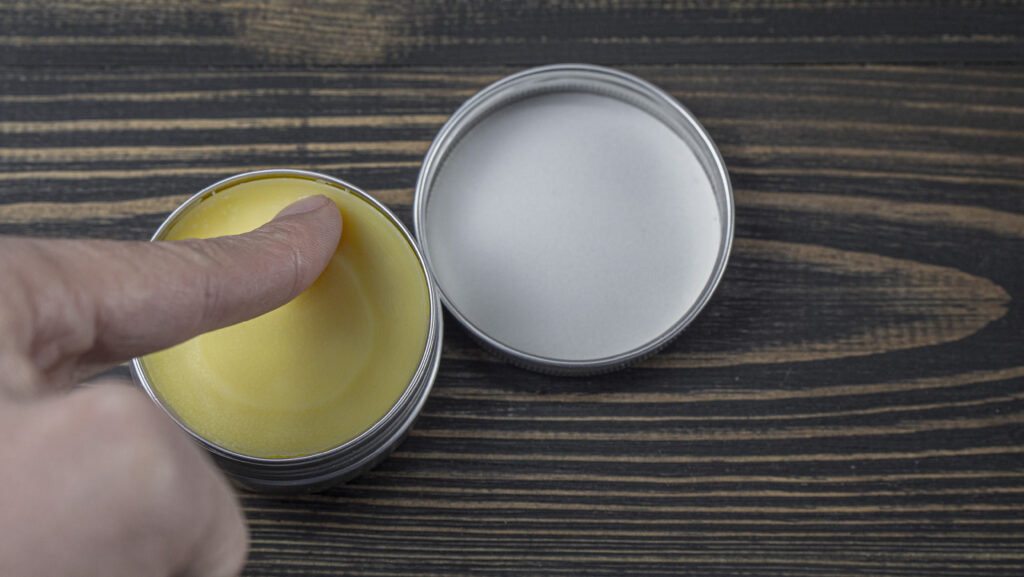Leather, a timeless and luxurious material, adds a touch of sophistication to our lives. However, without proper care, leather items can lose their luster over time. In this comprehensive guide, we delve into the art of leather restoration with a focus on the unsung hero of leather care – saddle soap.
Table of Contents
Understanding Leather
Before we embark on our masterclass, it’s essential to understand the diverse world of leather. From the supple texture of full-grain leather to the durability of top-grain leather, each type requires specific attention. Regular maintenance becomes the key to preserving the beauty of these luxurious materials.

What is Saddle Soap?
Saddle soap, with its roots deeply embedded in the equestrian world, is a specially formulated cleaner and conditioner for leather. Comprising ingredients like lanolin and beeswax, saddle soap not only cleans but also nourishes the leather, preventing it from drying out or cracking.
Choosing the Right Saddle Soap
Selecting the appropriate saddle soap for your leather is crucial. Not all leather types respond the same way to every product. Testing a small, inconspicuous area before applying saddle soap to the entire surface ensures compatibility and prevents unwanted reactions.
Step-by-Step Application Process
Mastering the art of applying saddle soap involves meticulous preparation. Cleaning the leather surface of dirt and dust is the first step, followed by a gentle application of the soap using a soft cloth or sponge. Circular motions allow the soap to penetrate and rejuvenate the leather.
Benefits of Using Saddle Soap
The benefits of using saddle soap extend beyond surface-level cleaning. By restoring natural oils and moisture, saddle soap acts as a barrier against environmental elements, enhancing the longevity of your cherished leather items.
Also Read: Dial Gold Soap
Common Mistakes to Avoid
While saddle soap is a powerful ally in leather care, misuse can lead to unintended consequences. Overuse and the application of the wrong type of soap are common mistakes that can be detrimental to your leather possessions.
DIY Leather Restoration Techniques
For minor damages, a few household items can come to the rescue. From olive oil to vinegar, discover DIY solutions to address scuffs and scratches, keeping your leather looking pristine between professional cleanings.
Saddle Soap vs. Other Leather Care Products
Understanding the nuances of saddle soap compared to other leather care products empowers you to make informed decisions. While conditioners and cleaners have their place, saddle soap shines in its ability to deep-clean and nourish simultaneously.

Testimonials from Leather Enthusiasts
Real stories from individuals who have experienced the magic of these soap firsthand provide insight and inspiration. Discover how this masterclass in leather restoration has transformed worn-out leather into a revived masterpiece.
Caring for Different Leather Items
Explore the tailored approach to applying these soap on various leather items. From shoes and bags to furniture, learn the intricacies of rejuvenating each piece, ensuring a customized restoration process.
Tips for Storing Leather Items
Preservation goes beyond cleaning. Proper storage conditions and protective measures during seasonal changes are crucial in preventing irreversible damage to your beloved leather possessions.
Professional Leather Restoration Services
While DIY methods work wonders, there are instances where professional intervention is necessary. Learn when to seek expert assistance and how to choose the right professionals for your leather restoration needs.
Environmental Impact of Leather Care
As we strive for sustainable living, exploring eco-friendly these soap options becomes imperative. Discover ways to care for your leather while minimizing your environmental footprint, contributing to a greener planet.
Conclusion
In conclusion, these soap emerges as a masterclass in leather restoration, offering a holistic approach to caring for your cherished items. With its ability to clean, nourish, and protect, these soap becomes an essential tool in the arsenal of any leather enthusiast. So, why wait? Dive into the world of these soap and witness the transformation of your leather items.

FAQs
Q1. Can I use saddle soap on all types of leather?
Saddle soap is a versatile leather cleaner typically suitable for most types of leather. It helps remove dirt, grime, and moisturizes the leather. However, because leather can vary in quality and finish, it’s wise to test these soap on a small, inconspicuous area first.
Q2. How often should I apply saddle soap to my leather items?
The frequency of applying these soap depends on factors like how often you use the leather item and the environmental conditions it’s exposed to. For regular maintenance, applying these soap a few times a year is generally sufficient. Overuse can lead to over-conditioning, so it’s essential to strike a balance.
Q3. Is saddle soap environmentally friendly?
Many modern these soaps are formulated with eco-friendly ingredients. When looking for an environmentally friendly option, seek products with natural components and minimal environmental impact. Manufacturers are increasingly recognizing the importance of sustainability in their formulations, so you should be able to find options that align with your environmental values.
Q4. Can saddle soap fix deep scratches on leather?
These soap is effective for addressing minor scratches and scuffs on leather. It can help clean and condition the leather, improving its overall appearance. However, for deep scratches that may have penetrated the surface or caused significant damage, it’s advisable to seek professional leather restoration services. They have the expertise and tools to handle more extensive repairs.
Q5. What should I do if my leather item has a strong odor?
If your leather item has an unpleasant odor, start by airing it out in a well-ventilated area. These soap can be helpful in eliminating mild odors by cleaning the leather. However, for strong smells, additional measures may be necessary. Consider using specialized leather deodorizers or, in extreme cases, consulting a professional for advice on odor removal techniques.




